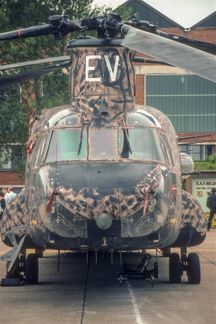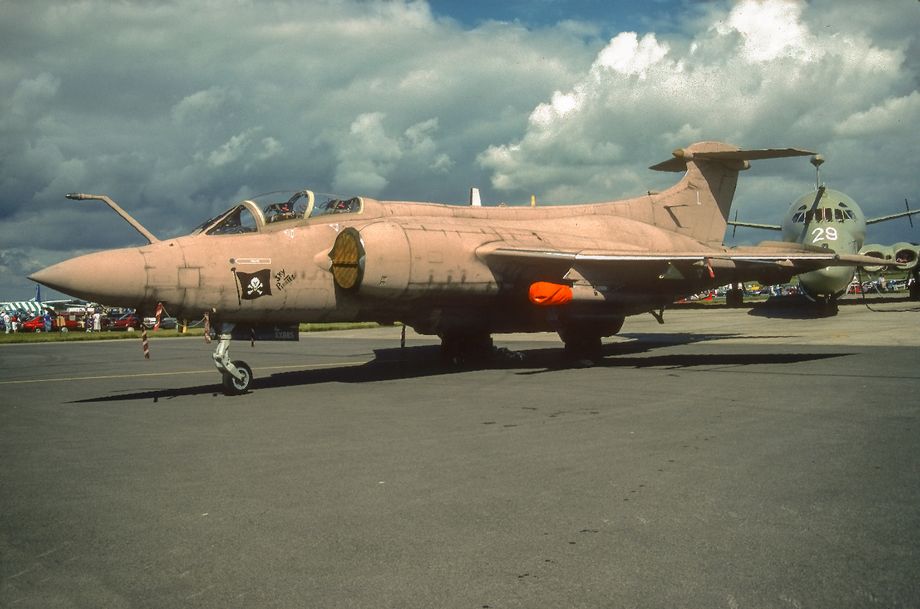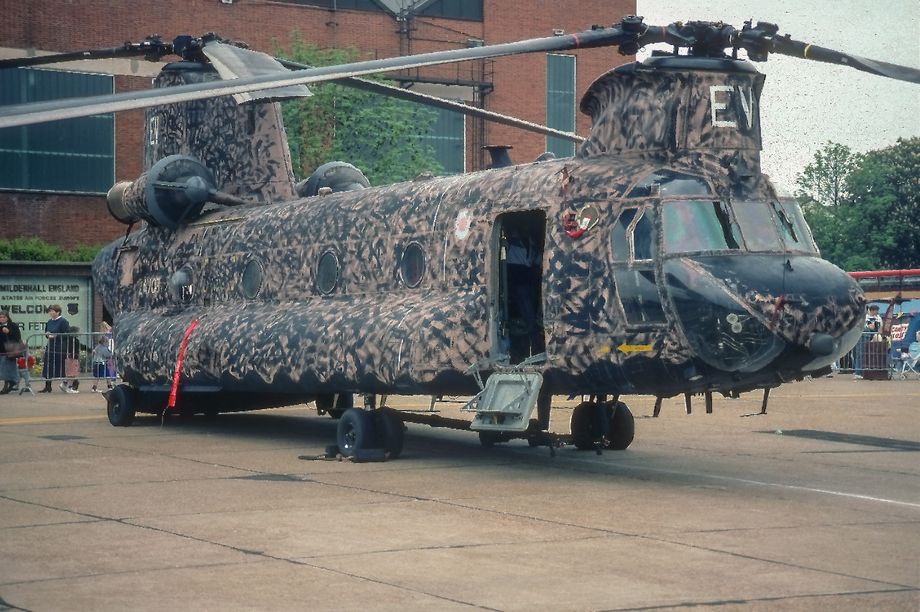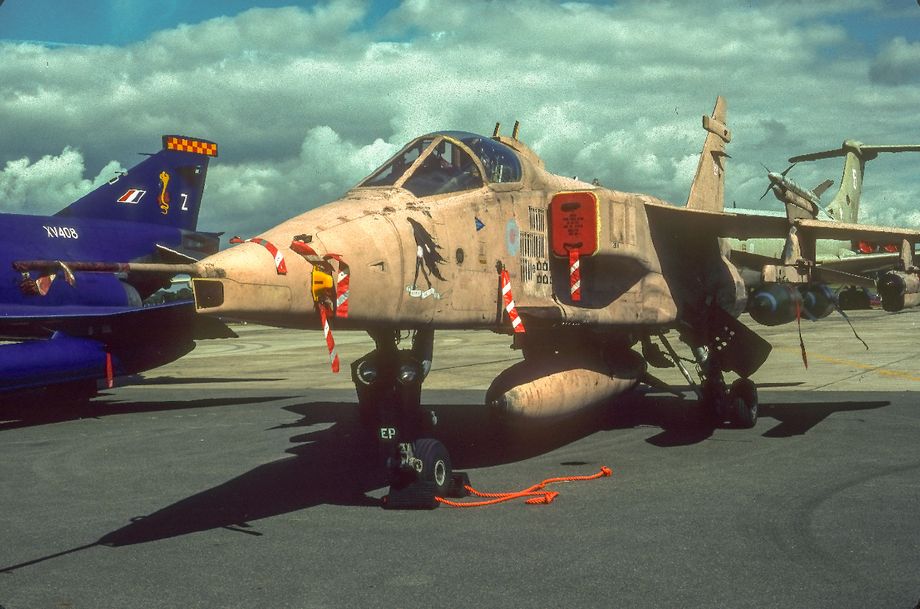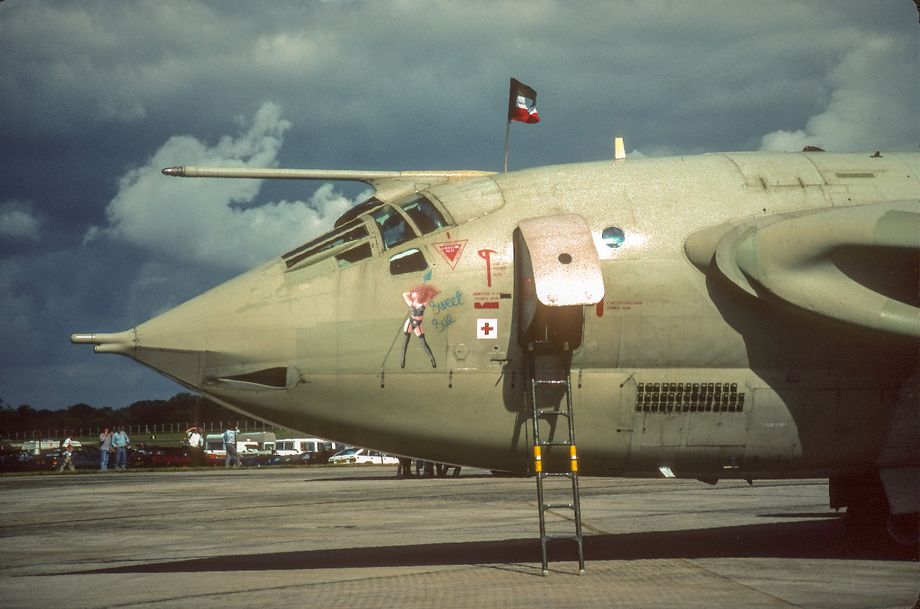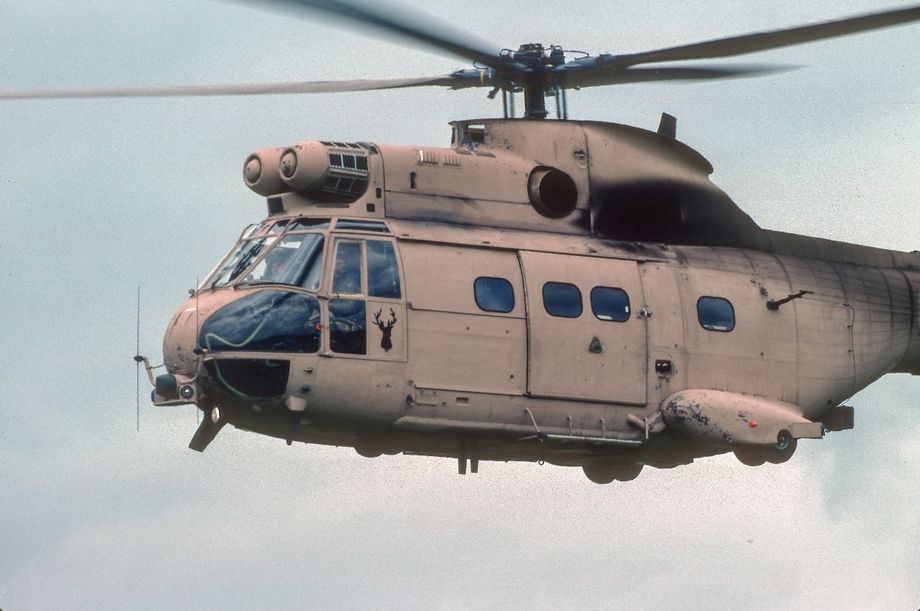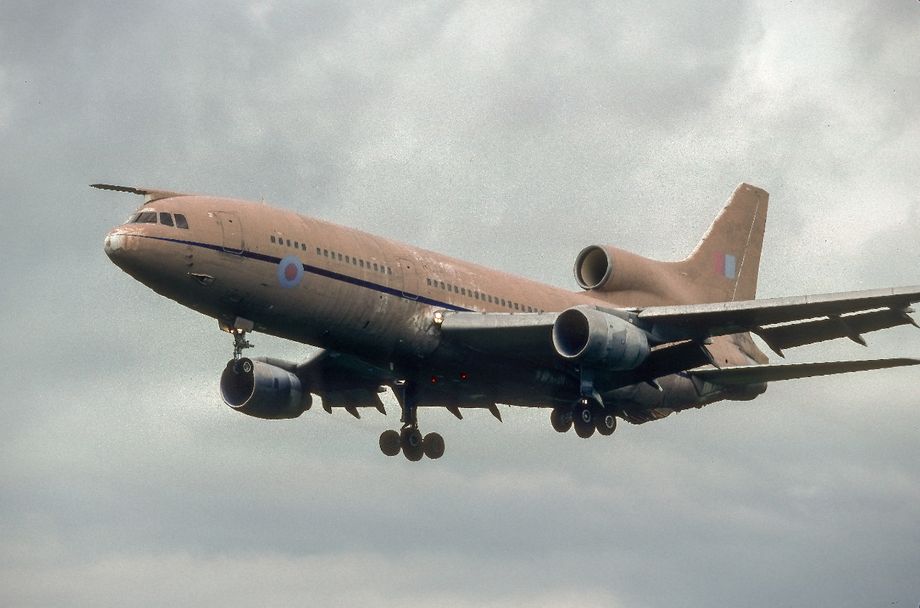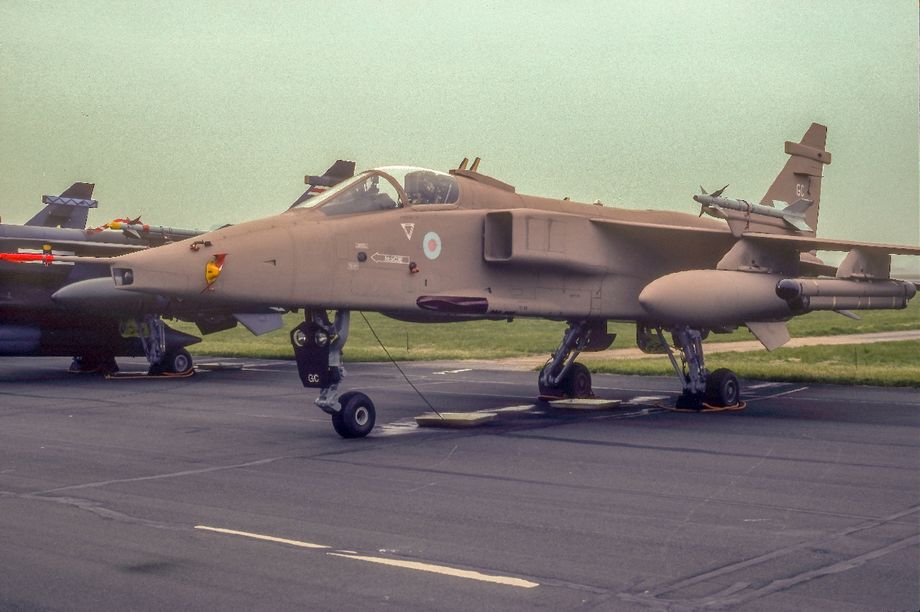In the Pink (Part 1)
Please note there has been some correcting and updating of the captions (with thanks to M. Hopper) of this In Focus.
Our David Draycott has very kindly taken the time to dig into his archives and scan some of his slides to help kick-off our look back at Desert Shield for In Focus The RAF deployed in some strength to bases across the Gulf states in support of the coalition, under Operation Granby, calling upon their many combat squadrons and support units. Given that the RAF had primarily geared itself up for a war in Eastern Europe its aircraft were camouflaged to blend into a backdrop of a German forest which compromised operations in the Gulf region against a predominantly desert backdrop. Consequently, an operational directive to adopt “Desert Pink” as a temporary colour scheme on deployed aircraft was issued. The colour ARTF (Alkali Removable Temporary Finish - and temporary it certainly was!) was hastily applied at base/squadron level, to the Tornado GR1/1A, Jaguar, Hercules, Puma, Gazelle, Sea King, Lynx, Chinook and even the Islander. National markings and some safety stencilling were retained but squadron identities were obliterated.
The harsh desert conditions and intense operational use of all aircraft once in the Middle East meant the pink finish deteriorated pretty quickly with little opportunity for touching up or maintenance. Consequently, most aircraft were more of a ‘flesh’ colour when they returned to the UK.
Interestingly, USAF and USN aircraft continued to operate without any modification to their existing schemes of greys, although there were a few exceptions; an EA-6B Prowler and A-6E Intruder were ‘trialled’ in desert colours whilst an A-7E of VA72 from USS John F Kennedy famously sported a ‘Desert Storm’ scheme but this was only applied after the hostilities had ceased and it had returned home. The A-10s remained in their “European One” camouflage throughout the conflict.
From a modeller’s perspective, plenty of manufacturers include shades of “Desert Pink” in their colour ranges and, as with the real aircraft, there is a broad variation in the shades!
Hopefully, the images below provide a useful reference and will inspire some building of the many types used by the RAF during Operation Granby, with 2021 being the thirtieth anniversary of the conflict; the venerable Tornado, Jaguar, Buccaneer, Tristar, Sea King, VC10, Nimrod and Victor fleets all now retired!
Happy modelling!
Buccaneer S2B XX885 ‘L’ of 12 Squadron. The 12 Buccaneers were originally introduced into the conflict to designate for the Tornados using AVQ 23E Pave Spike laser targeting pods. Note the Sky Pirates nose art (which bedecked all but one aircraft), the “HELLO SAILOR”, “CAROLINE” and “FAMOUS GROUSE” nose art are on the other side unfortunately. Fairford in July 1991. Photo © D. Draycott.
Chinook HC.1 ZA707 ‘EV’ of 7 Squadron in its ‘pink and black squiggle’ camouflage at RAF Mildenhall in May 1991. This ‘dumbing down’ of the pink was apparently achieved with a paint roller and found necessary for nocturnal operations as the ARTF finish tended to be quite reflective. Photo © D. Draycott.
Jaguar GR Mk.1A XZ356 ‘N’ “MARY ROSE” of 6 Squadron at Fairford in 1991. This was Wing Commander Bill Pixtons mount as evidenced by the pennant under the cockpit. It carries a mixture of bombing and reconnaissance mission markings. Photo © D. Draycott.
Victor K Mk.2 XH671 “Sweet Sue” of 55 Squadron at Fairford in 1991. The Victor fleet had already transitioned to the ‘Hemp over grey’ scheme prior to Desert Storm, which although retained was enhanced by the addition of nose art and refuelling mission markings. Some 8 Victors participated in the conflict. Photo © D. Draycott.
Puma HC Mk.1 XW220 ‘CZ’ of 33 Squadron at Fairford in 1991. 22 Pumas were sent to the Gulf and upgraded with IR jammers, MAWS detectors and chaff/flare dispensers prior to departure. Photo © D. Draycott.
A very weathered Tristar K. Mk.1 ZD951 “Perky” of 216 Squadron at Fairford in 1991. Initially the Tristars which arrived in the region retained their overall white scheme but this proved to be very conspicuous making them an easy target. Consequently, two Tristars were hastily camouflaged in pink and became known as “Pinky” and “Perky”. Photo © D. Draycott.
Jaguar GR Mk.1A XZ362 ‘GC’ of 54 Squadron at RAF Marham in 1992. Although around 36 Jaguars were painted pink only 13 actually participated in Operation Granby. XZ362 stayed behind and was presented at the Queen’s review of the RAF on its 75th Anniversary and gives a good idea of what the ARTF finish looked straight out of the paint shop! Photo © D. Draycott.
Jaguar A of Armee de L’Air, 115 ‘11-RL’ of EC3/11 ‘Corse’ at Honington in 1992. There were several colour schemes for French Jaguars participating in Operation Daguet and this is not pink but ‘Crème Sable’. Photo © D. Draycott.
